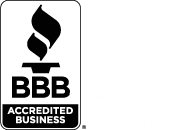Juggling a Move and a Startup

How to get ready for your move after you sell your house.
Juggling a Move and a Startup: Mastering the Art of Business and Relocation
Starting a business is an exciting but challenging endeavor, and when you’re also moving to a new home, it can feel like a daunting task. However, with the right approach and tools, you can successfully start a business and move at the same time. In this article shared by The Movers, we’ll explore six key strategies to help you manage this transition smoothly.
Use Project Scope Management to Keep Things in Line
Project scope management involves defining, documenting, and controlling the boundaries and deliverables of a project. When starting a business and moving simultaneously, it’s essential to establish clear goals and expectations for both processes. Begin by listing the tasks involved in your move, such as packing, hiring pros like The Movers, and setting up utilities. Similarly, outline the steps required to launch your business, from product development to marketing and sales. By creating a detailed plan for each aspect, you can better allocate resources and avoid potential pitfalls. If you’re looking for information to get started with project scope management, this page deserves a look.
Create a Floor Plan Before Moving
Before you start packing and moving your belongings, create a floor plan to help you visualize your new space and plan your move. This will allow you to determine how your furniture and equipment will fit into the new location and identify any potential issues that may arise during the process. Additionally, having a floor plan in place will make unpacking and organizing your new home and workspace more efficient.
Let Clients and Customers Know About Your Move
As you prepare to launch your business and move, it’s crucial to keep your clients and customers informed. Notify them of your upcoming relocation and provide your new address, so they know where to find you. If there will be any disruptions to your services or products during the transition, communicate this information as well. Maintaining open lines of communication will help you retain your existing clientele while attracting new customers to your growing business.
Keep Your Website and Social Media Profiles Updated
In today’s digital age, your online presence is critical to the success of your business. As you move and establish your new workspace, ensure that your website and social media profiles reflect your current location and contact information. This will not only help potential clients and customers find you but also demonstrate that you’re an active and engaged business owner. Additionally, consider sharing updates about your move and the progress of your new space on social media to generate excitement and interest in your business.
Create a Balanced Schedule
One of the most challenging aspects of starting a business and moving at the same time is finding the right balance between work and unpacking. To prevent burnout and maintain productivity, create a schedule that allows you to focus on both tasks. For example, allocate specific hours each day for unpacking and setting up your new home, while reserving the remainder of the day for business-related activities. By establishing boundaries and sticking to your schedule, you’ll be able to manage your workload effectively and settle into your new space more quickly.
Consider Hiring a Virtual Assistant
As a new business owner, your time is valuable, and delegating tasks can greatly improve your efficiency. Consider hiring a virtual assistant to help with administrative duties, such as managing your inbox, scheduling appointments, and updating your website. This will allow you to focus on higher-level tasks, like developing your products or services and growing your customer base. A virtual assistant can be a cost-effective solution for managing your workload during this busy period.
Starting a business and moving simultaneously can be a challenging experience, but with careful planning and organization, it’s possible to succeed in both endeavors. By employing project scope management, creating a floor plan, notifying clients and customers, updating your online presence, establishing a balanced schedule, and hiring a virtual assistant, you’ll be well on your way to a successful transition and a thriving business.


